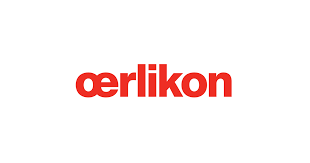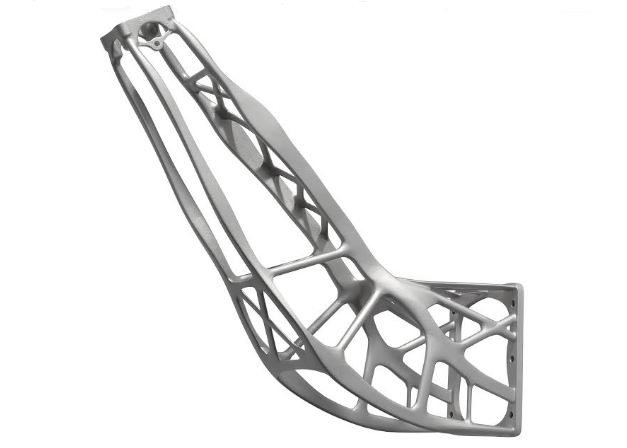Germany: A powerful trio has come together in additive manufacturing research as Oerlikon, Linde, and the Technical University of Munich create an alliance for developing a high-strength yet lightweight aluminum-based alloy.
 This ultimate goal of this EUR 1.7 million research project—with 50 percent of it funded by the Bavarian Ministry of Economic Affairs—is to meet the requirements for 3D printed materials in both aerospace and automotive applications. This dynamic partnership was announced in October, and includes GE Additive too, with all working together to promote better collaboration and cross-disciplinary research. The expectation also, according to a recent press release by the group, is that AM progress will be accelerated due to the level of expertise contained in ‘one geography.’
This ultimate goal of this EUR 1.7 million research project—with 50 percent of it funded by the Bavarian Ministry of Economic Affairs—is to meet the requirements for 3D printed materials in both aerospace and automotive applications. This dynamic partnership was announced in October, and includes GE Additive too, with all working together to promote better collaboration and cross-disciplinary research. The expectation also, according to a recent press release by the group, is that AM progress will be accelerated due to the level of expertise contained in ‘one geography.’
Acting as a consortium, Oerlikon, Linde, and TUM all bring different complementary skills to the ongoing project in materials science. Overall, comprehensive knowledge of chemistry, thermo- and fluid dynamics is required for the development of such an alloy.
“Using our proprietary software, which enables big data simulation and analysis, Scoperta-RAD, Oerlikon provides critical solutions for the development of new materials and performance optimization of available materials,” says Dr. Alper Evirgen, Metallurgist at Oerlikon AM.
Oerlikon’s specific expertise in both powders and material science will offer a significant contribution to the development project.
“There are significant challenges during the additive manufacturing of aluminum alloys because the temperatures reached in the melt pool create an extreme environment that leads to evaporation losses of alloying elements that have comparatively low boiling temperatures – such as magnesium,” says Dr. Marcus Giglmaier, Project Manager, AM Institute and Research Funding Manager. “Additionally, the cooling rates of more than 1 million °C per second, create high stresses during the solidification process, which can cause micro cracks in the solid material.”
 Linde will offer expertise in:
Linde will offer expertise in:
- Expertise in gas atmosphere control
- Evaporation suppression
- Helping manufacturers create optimum printing conditions
“Characterizing and controlling the gas process during AM not only has the potential to prevent evaporation losses, but also to accelerate the entire printing process,” says Thomas Ammann, Expert Additive Manufacturing at Linde. “Using a tailor-made gas chemistry for the new alloy would help to control the processes occurring in the melt pool and minimize the compositional changes of the alloys, as well as preventing cracking during printing.”
TUM’s Institute of Aerodynamics and Fluid Mechanics (AER) reflects the understanding of the AM processes via numerical simulations:
“The AM research alliance bridges the gap between our latest numerical modeling achievements and future industrial applications,” says Prof. Nikolaus Adams, Director of the AER, where a process simulation tool has been developed to cover the whole melt pool dynamics.
“A detailed insight into the simultaneously occurring thermo-fluid dynamic phenomena is crucial in gaining a better understanding of the entire process and the final material characteristics,” adds Dr. Stefan Adami on the benefits of computational fluid dynamics.
Will you be attending Formnext in Frankfurt next week from November 19-22? If so, stop by the following booths to learn more:
- Oerlikon AM: Hall 12.1, Booth B01
- Linde: Hall 12.0, Booth C141
- TUM: Hall 11.1, Booth C61
Aluminum is one of the most popular materials we see used today in metal 3D printing, spanning many other projects too, from powders for binder jet printing to inks and further studies regarding the manipulation of mechanical properties.
What do you think of this news? Let us know your thoughts; join the discussion of this and other 3D printing topics at 3DPrintBoard.com.
[Source / Images: Oerlikon]Subscribe to Our Email Newsletter
Stay up-to-date on all the latest news from the 3D printing industry and receive information and offers from third party vendors.
You May Also Like
Air Force Awards Fortius Metals $1.25M to Qualify 3D Printing Wire for Hypersonic Applications
AFWERX, part of the US Air Force Research Laboratory (AFRL), awarded a Direct-to-Phase II Small Business Innovation Research (SBIR) contract worth $1.25 million to Colorado’s Fortius Metals, to accelerate qualification...
US Air Force Awards JuggerBot $4M for Large-format Hybrid 3D Printing
Large-format 3D printer manufacturer JuggerBot has received a $4 million grant to develop a large format 3D printer, courtesy of the Under Secretary of Defense, Research and Engineering Manufacturing Technology...
Where Have All AM’s Unicorns Gone?
In the rapidly evolving world of 3D printing, startups valued at over a billion dollars, known as unicorns, once seemed as fantastical as the mythical creatures themselves. While a few...
How My Childhood Fascination with Planes Led to Investing in 3D Printing
My fascination with aerospace started young, and I started studying planes–identifying them in the sky and learning everything I could about how they work. Fast forward to my first week...

































